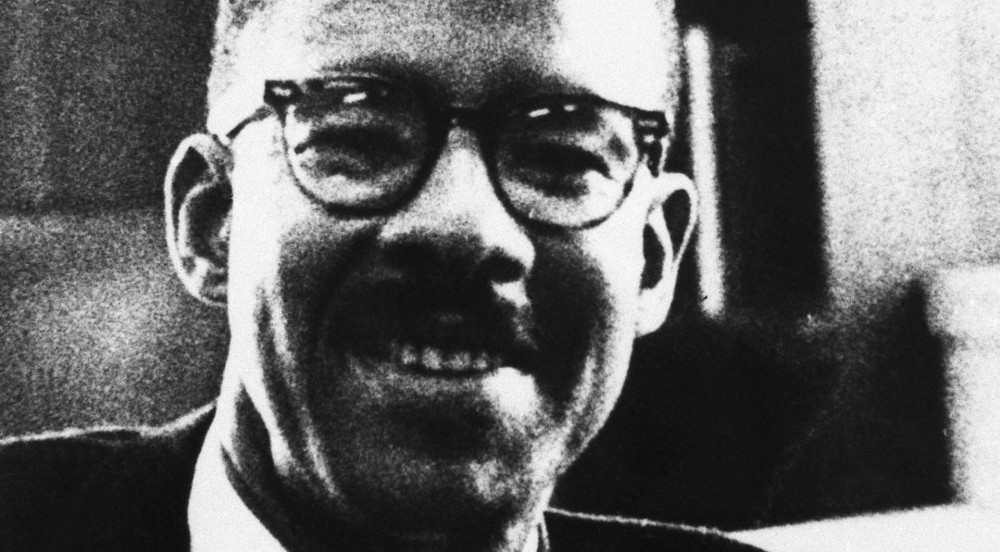Famed EBONY and JET photographer Moneta Sleet, Jr. captured some of the most pivotal moments in history. He took the Pulitzer Prize-winning photo of Coretta Scott King at her husband Martin Luther King, Jr.’s funeral with their youngest daughter Bernice. At Mr. Sleet’s own service in 1996, Johnson Publishing Company founder John H. Johnson called the photo “perhaps the greatest photograph ever made of the grief of a widow.”

With that photo, Sleet, in 1969, became the first Black man, first Black person in journalism, and first and still the only person working for a Black publication to win the Pulitzer Prize. For over 40 years, Sleet, who passed away of cancer at age 70, worked for Johnson Publishing, taking pictures of not just the Civil Rights Movement and historical change agents Dr. King, Fannie Lou Hamer and Rosa Parks, but also of Muhammad Ali, Harry Belafonte, African leaders Haile Selassie and Kwame Nkrumah, and many more. In 1998, Johnson Publishing released the book, Special Moments in African American History 1955-1996: The Photographs of Moneta Sleet, Jr., EBONY Magazine’s Pulitzer Prize Winner, celebrating his work.
It's this legacy his hometown Owensboro, Kentucky (located roughly two hours from more well-known Louisville) celebrates with the Through Sleet’s Eyes Festival February 24-25 at the RiverPark Center. Sleet, who was born in 1926, was raised in Owensboro, attending segregated schools there, including Western High School. He also attended Kentucky State before serving in the Army during World War II and later continuing his studies in New York City at the School of Modern Photography and New York University, where he received his master’s degree in journalism. Prior to EBONY and JET, he worked with The Amsterdam News as a sportswriter and the Black picture magazine Our World as a photographer.
“This will be the first time this iteration of honoring him has happened in Owensboro,” festival chair Emmy Woosley shares.
Woosley knows firsthand how necessary the festival is. Back in 2021, she was dismayed when her pitch to her Leadership Owensboro class to do a group project honoring him did not register. “Several of them hadn’t heard of him, which was a little disheartening because his story is so incredible, and Leadership Owensboro is the best and brightest of the community,” she discloses. And this was in spite of there being a historical marker and several efforts to honor him over the years, including a noted exhibition of his work at the Owensboro Museum of Fine Art in the 1990s.
Once Woosley educated them on Sleet, however, she says “immediately they all wanted to jump in and do something.” After several ideas, including donating a bronze statue of Mr. Sleet to the city that Woosley is not giving up on, the festival evolved. Free to the public, Through Sleet’s Eyes, supported by local, state, and other sponsors, features many treats, including a conversation with fellow Pulitzer Prize-winning photojournalist Ozier Muhammad who worked with Sleet at Johnson Publishing, a performance of actor/playwright Jeremy Gillett’s original one-person show The Power of the Lens on Sleet’s life, the documentary A Fine Remembrance created specifically for the festival, and the photography exhibit Moneta Sleet Jr: A Witness To History with images, Woosley says, are shared from the Johnson Publishing Company Archive.
Atlanta-based graphic artist Larmarrous Shirley was especially honored to lend his talents, which include designing the official logo and branding, to the festival. “I was always inspired by his career. I really just wanted to help folks learn more about him and thought it was awesome that people in Owensboro, Kentucky wanted to honor him,” he shares through private messaging.
That motivation is also personal for Shirley. “I am originally from Kentucky and we both attended Kentucky State, so I was familiar with his work when I was in school,” he says. “I am working with The King Center now, so I see his photos all the time.” Particularly special and worth noting for Shirley is the incorporation of a variation of colors from his alma mater Western High School, which was segregated during the 1940s when Sleet attended, into the logo and other branding. There he began his journalism career as editor of the school paper.
“Mr. Sleet’s work was photojournalism at its best and I sincerely believe he is one of the greats,” says Shirley.
“Sometimes when you live in a smaller community,” shares Woosley, “you forget that people from here can do big grand things. And one of our main goals with the festival is to not only educate people about Sleet’s story and his legacy, but to inspire that next generation.”
For more information on the Through Sleet’s Eyes Festival in Owensboro, Kentucky, visit the tsefest.org.
Ronda Racha Penrice is the author of Black American History For Dummies and editor of Cracking The Wire During Black Lives Matter.












